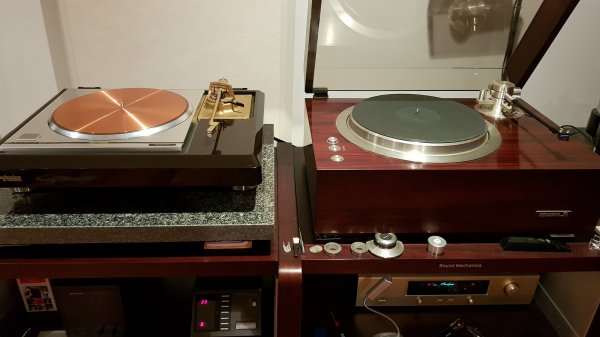Keith, I’ve often thought about this.
We evolve our sound preferences in different ways, choose gear and gear directions that “speak” to us in a certain way.
And then fashion our system moulding to enhance or counterbalance those directions.
So Peter has gone for maybe a slightly warmer, more naturally fluid sound w his SME 30, that works well with a more revealing SS amp/neutral spkr.
Albert has gone for a more forensic, detail mining SP10 Mk3, that works well counterbalanced by a warmer, more forgiving tube amp chain.
I my case, I’ve got a very full blooded, tonally dense sound, and the last thing I need is a woolly sounding belt drive, or something overly romantic. I’m best off with my fast, dynamic, start/stop rim drive/air arm.
I’m not sure if Peter’s SP10 v SME comparisons will tell him much as a result.
Well Marc, this is one of the questions I posed in the OP. What do such direct comparisons actually tell us? What do they not tell us? I posted my impressions about comparing these two tables because such comparisons are rarely done with turntables, and rarely so directly in one's own system. It is not my intention to reach specific conclusions about the SP10 in general, nor is this about the sound of that table in other systems. I am also not claiming greatness for the SME or presuming how it would compare to other tables, some very fancy like the Continuum. (Although I welcome any increased level of discussion about SME in these pages). It is simply about the sharing with fellow members my impressions of a fascinating five days with my friend's table in my system and the exercise of critical listening over that period. I am curious about what such an exercise can tell us. What conclusions can we actually reach? What limitations prevent us from extrapolating further?
I am fascinated by the comments that the SME is warm and thus balances my Pass/Magico combination. I would love to hear the SME in Madfloyd's system and compare it to his Kronos in his ultra revealing system. That would certainly tell me something more about this table. Moving it, and switching arms and cartridges is another matter. And I would want to take the Vibraplane and compressor too. Imagine the hassle, but it would make for a really interesting experiment and followup thread.
It is an incredible hobby with so many room, component and system complexities, that it is a wonder we every reach certitude about anything outside of the specific room/system and recording context in which we hear things.








